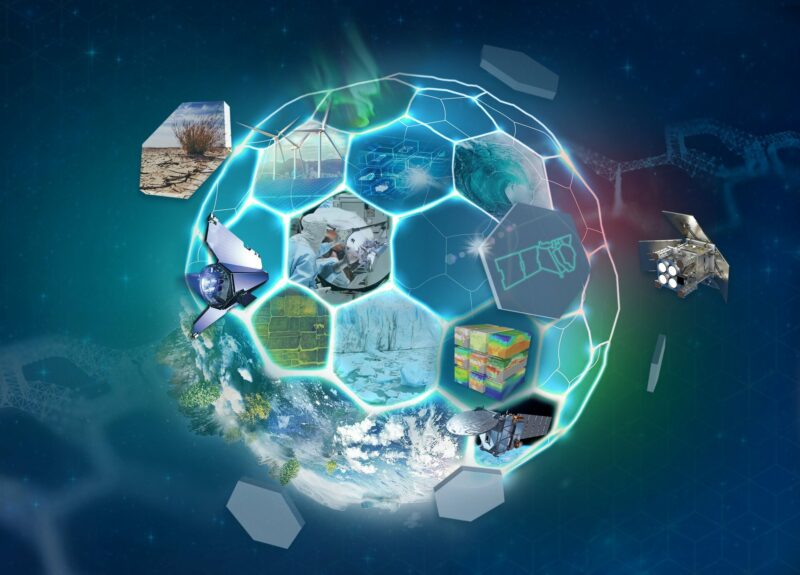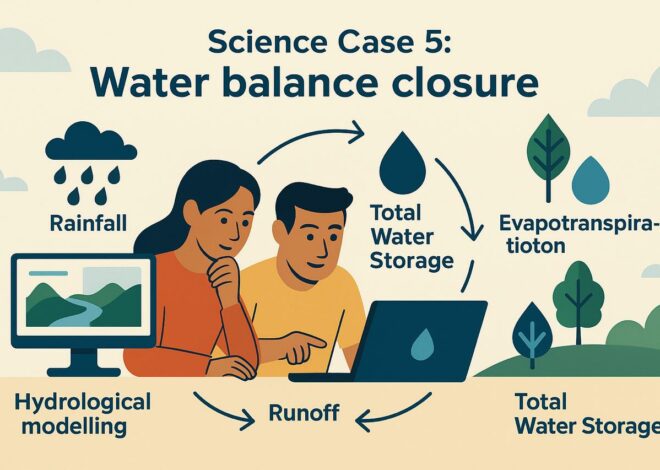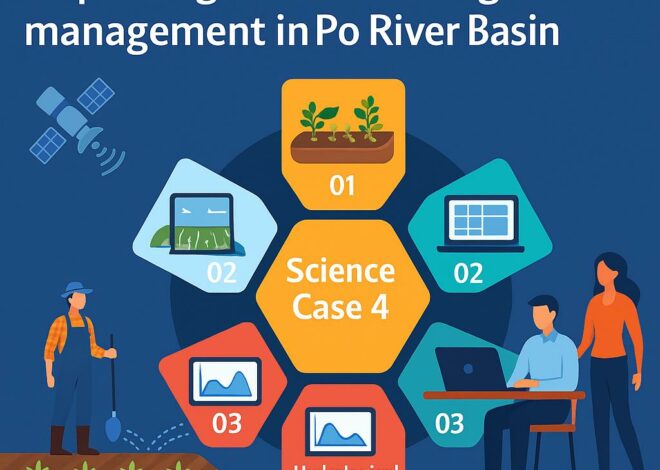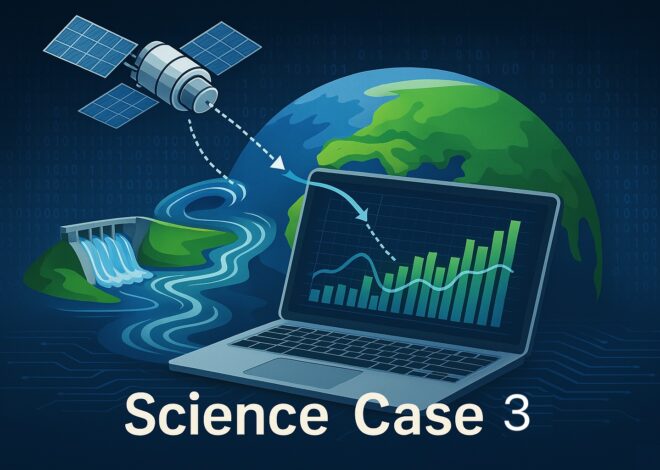
Who is in charge for ground/EO data in the projcet?
In the context of WP1, data preparation involves generating, consolidating, and cataloging a comprehensive reference Earth Observation (EO) dataset covering the project’s four study zones. This reference dataset comprises:
– A high-resolution EO dataset, featuring products with resolutions below 1 km, encompassing various water cycle-related variables.
– An additional products dataset containing other EO products at coarser resolutions.
– A collection of in-situ datasets serving as references.
The 4DHydro consortium proposes organizing the product collection into subtasks, each focusing on a specific variable or group of related variables (e.g., rivers and lakes products), led by the consortium partner with the most relevant expertise. Partners will host their own products whenever possible, while any remaining products (e.g., open data) will be referenced or hosted in a dedicated storage volume created for the project. Additionally, user manuals will be developed for each product by the leader of the corresponding subtask.
TUW will supply high-resolution products from the Copernicus Global Land Service (CGLS), including SSM1km derived from Sentinel-1 and SWI1km derived from fused Sentinel-1 and ASCAT data (see webpage). Additionally, TUW will contribute a downscaled 1 km soil moisture (SM) dataset from the ESA CCI SM product (expected publication date: early 2023), while UFZ will provide a 1 km global surface soil moisture product based on a dual-channel algorithm using Sentinel-1 synthetic aperture radar observations (expected publication date: early 2023). Coarser resolution SM products, such as ESA CCI SM, will also be gathered in this work package. In-situ measurements from the International Soil Moisture Network will be collected, along with other site-specific measurements when available.
CNR-IRPI will build upon its experience from previous and ongoing ESA projects (SMOS + Rainfall, DTE Hydrology, 4DMED-Hydrology) to create a high-resolution (1 km, daily) precipitation product covering Europe. This product will merge two SM2RAIN-based (Soil Moisture to RAIN) products utilizing Sentinel-1 and ASCAT soil moisture data with GPM late Run satellite data. However, considering the limitations of satellite soil moisture data in mountainous areas and over snow/frozen soils, special attention will be given to these factors. Consequently, a high-resolution (1 km, 1 day) rainfall product derived from Earth Observation (EO) data will be developed and validated for hydrological applications.
UFZ will collect the ECOsystem Spaceborne Thermal Radiometer Experiment on Space Station (ECOSTRESS) product, the MODIS global evapotranspiration product and other datasets generated for this project using the HOLAPS, ALEXI and DisALEXI models. Lower resolution products widely used in the literature, like the Global Land Evaporation Amsterdam Model (GLEAM) product, will be collected for comparison purposes. Additionally, evapotranspiration measurements from eddy covariance sites will be collected from different databases for the validation and evaluation of EO products.
Deltares will leverage on Global Water Watch and related ESA Surface2Storage project. Within these projects high-resolution EO data is used to quantify surface water extent, level and volume, by combining data from sensors that can capture these types of dynamics (e.g., Sentinel-2 for surface water extent, ICESat-2 for water levels), enhanced by in-situ measurements when available. The combination with hydrological models enables a detailed assessment of reservoir inflow and outflow, which in the case of large reservoirs is a critical component of the downstream flow regime. This data can additionally be used for calibration and/or validation of the models, which is also the case for the river levels and discharge data that are also part of this task. In-situ measurements of this kind will be collected for all study areas and supported by EO datasets.
MobyGIS tracks snowpack evolution in selected mountain ranges, integrating physical models with EO data, particularly Sentinel constellation-derived snow-covered area data. The approach comprehensively describes domain characteristics, monitoring snow variables like snow-covered area, depth, water equivalent, and melt at high resolution for the Alps, Scandinavia, and mountainous regions of the Rhine and Po basins from 2000 to 2020. Data will be provided as 500 m resolution raster maps, aiding runoff assessment in various case studies. Meteo reanalysis data feeds the model, and in-situ snow depth observations, if available, enhance solid precipitation estimation and melting rate assessment during the melting season.
CSGROUP has developed the Surfwater toolchain for the French Spatial Agency (CNES), generating surface water masks at 10m resolution from Sentinel 1 radar or Sentinel 2 optical images, or a combination of both. The toolchain utilizes the MAJA algorithm to mask or remove clouds in Sentinel 2 images. It can produce single masks or monthly mean water masks to reduce uncertainty. In 4DHydro, CSGROUP – France plans to generate dynamic water masks for the study regions using the Surfwater toolchain and other tools. They will merge products and produce corresponding uncertainty maps when feasible. Additionally, they will compile existing open datasets of dynamic surface water masks, such as Landsat Collection 2 (C2) Level-3 Dynamic Surface Water Extent (DSWE) or those from project partners.
In the ESA project Irrigation+, CNR, in collaboration with partners, is exploring, developing and validating advanced Earth Observation-based algorithms and techniques for irrigation mapping, quantification and detection of seasonal timing of irrigation from field to regional/global scale. The project capitalizes on the advent of the European Space Agency (ESA) Sentinel missions in synergy with other data types and models. In 4DHydro the results of Irrigation+, and particularly the regional products available at 1 km resolution for the Po and Ebro river basins. Indeed, the accuracy of the irrigation water product needs to be carefully checked before its use in large scale hydrological modelling. If successful, the integration of Irrigation+ and 4DHydro project results will constitute a ground-breaking result both in terms of scientific achievements and also for the operational management of water resources.
TUW will collect the satellite-based groundwater storage variations data generated within the H2020 project Global Gravity-based Groundwater Product (G3P, https://www.g3p.eu/). A preliminary groundwater product shall be released by the end 2022. Along with the EO groundwater dataset, we will collect in-situ measurements of groundwater levels obtained from the In- ternational Groundwater Resources Assessment Centre (IGRAC, https://www.un-igrac.org/) and other site- specific measurements when available. Simultaneously, we will collect total water storage variation retrieved from GRACE, specifically the COST-G (International Combination Service for Time-variable Gravity Fields) product. It should be noted both remotely sensed products of groundwater storage and total water variations are only available at coarse spatial resolution.
To enhance accessibility, the 4DHydro consortium will prepare Analysis Ready Data (ARD) by:
– Converting to common formats.
– Clipping to common extents.
– Referencing elevation data to a unique datum.
The dataset will be cataloged on a central GitHub repository using the STAC specification, ensuring automatic updates to the project website and ESA’s Open-Science Data catalogue.
Related Posts

Science Case 5 (led by University of Trento): Water balance closure over all regions

Science Case 4 (led by Valencia Polytechnic University): Improving water and irrigation management in the Po River Basin

